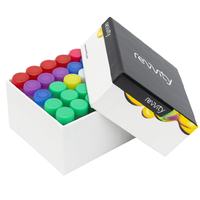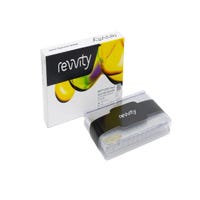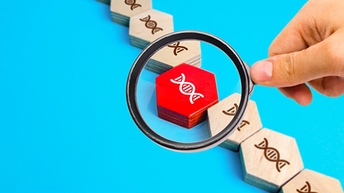Gene modulation using CRISPR
We have developed a dedicated sgRNA design platform (Dharmacon™ CRISPR Design Tool) to identify optimal target sequences within gene bodies. This platform incorporates predictive models for off-target interactions and evaluates sgRNA activity to support reliable CRISPR knockout (KO) experiments. For example, CRISPRko can be used to excise a lncRNA gene using 2 guides flanking it, to generate a knockout cell line.
Beyond conventional gene knockout, the development of CRISPR interference (CRISPRi) and CRISPR activation (CRISPRa) has unlocked the ability to finely tune lncRNA expression without altering genomic sequences. Our in-house RNA synthesis capabilities enable the production of high-quality custom reagents to support CRISPR interference and activation studies.
Gene modulation using RNA interference
siRNA research tools such as Lincode™ siRNA, reduce off-target effects by inactivating passenger strand activity and minimizing seed region miRNA-like effects enhancing specificity and knockdown efficiency. These same tools can be synthesized with modifications that allow for self-delivery into cells, and/or, for in-vivo nuclease resistance enabling animal models.
For sustained knockdown we offer the SMARTvector™ lentiviral shRNA, developed using our advanced microRNA-based shRNA rational design algorithm and expressed under an optimized promoter. It can be used for highly potent and specific lncRNA gene silencing.
For applications requiring temporal control, SMARTvector inducible reagents enable the rapid generation of stable cell lines with tightly regulated shRNA expression. The Tet-On 3G promoter system provides minimal basal expression and strong inducibility, allowing near wild-type levels of target gene expression in the absence of doxycycline and robust gene knockdown upon induction.
RNA extraction
chemagic systems are designed for high-throughput, efficient, and reliable RNA extraction from various sample types, including blood, tissues, and cell lysates. The technology involves specific capture of nucleic acids by magnetic beads, which are then separated from the sample material. The isolated DNA/RNA is suitable for a wide range of downstream applications such as NGS, MPLA, genotyping, long read sequencing, and PCR.
Bulk RNA sequencing
The NEXTFLEX™ Rapid Directional RNA-Seq Kit 2.0 is the workflow we recommend for studying lncRNA. Strand-specific library construction is critical for distinguishing overlapping sense and antisense transcripts, a common feature of lncRNAs. Using this kit along with rRNA depletion (for example with the NEXTFLEX RiboNaut rRNA depletion kit upstream or with CRISPR-based depletion downstream) will allow capturing both polyadenylated and non-polyadenylated lncRNA species while minimizing bias.
This workflow allows incorporating low or high input RNA from either high quality or degraded samples. Together with the NEXTFLEX UDI-UMI barcodes researchers can sequence deeper without being affected by PCR duplicates, allowing robust quantification of lncRNA expression.
Automation of RNA sequencing workflows
The NEXTFLEX Rapid Directional RNA-Seq Kit 2.0 is fully automated on the Sciclone™ G3 NGS/NGSx and Zephyr™ G3 NGS workstations. This allows generation of more libraries in less time while maintaining data quality.
Explore our solutions
Featured resources
Featured products



































